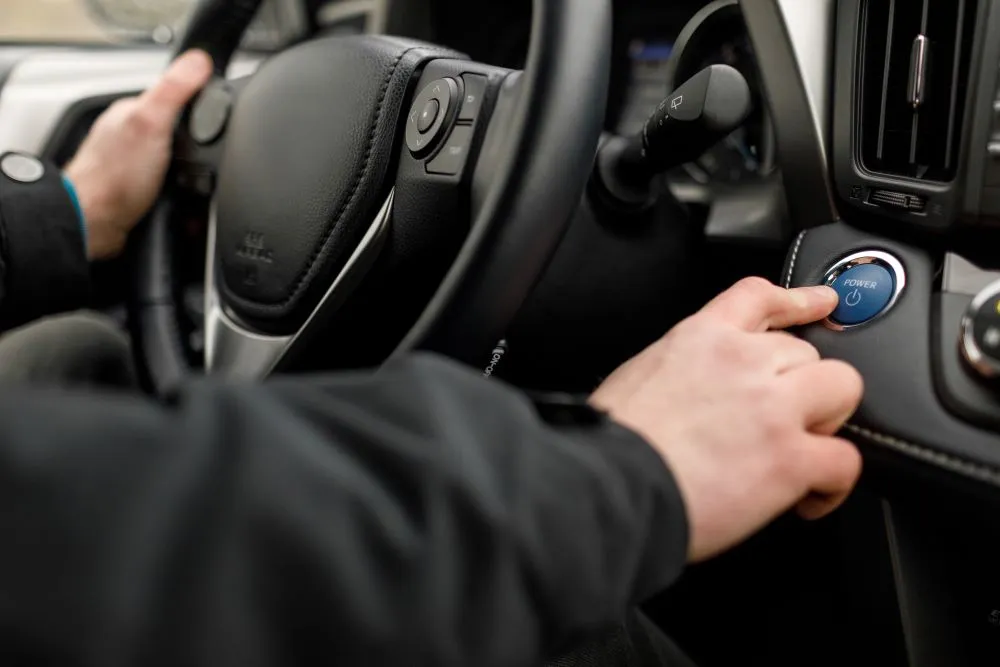Thieves target keyless entry cars

Keyless entry is one of the latest technological developments designed to make driving easier. It’s a clever system that allows you to unlock car doors without handling the keys – so there’s no more juggling bags and coats while you scramble around to unlock your vehicle. Just having the key on your person grants you entry into the car without the hassle.
However, car thieves are also changing their tactics to keep up with the latest trends. The days when you could break into a car using a wire hanger are long gone, but that doesn’t mean thefts have gone down. In fact, the DVLA revealed that there were 64,087 vehicles reported stolen in 2023 – an increase of 5% on the previous year. That equates to 176 cars stolen every day, or one car stolen every eight minutes and 12 seconds, from somewhere in the UK last year.
This peak in thefts is partly because of keyless entry systems, and the ways in which car thieves can hack your vehicle and key’s signal. It’s shockingly easy for them to do, and suddenly you’ve gone from keyless to carless!
What is keyless theft and how does it work?
If you have to press a button on your car’s key fob to enter, and turn the ignition with your key, then your car is not ‘keyless’ entry. Keyless entry cars allow you to unlock and start the car with the key fob still in their pocket or bag. Once inside your car, you just need to press a button to start the engine, without ever needing to touch the key fob. It’s all done using Radio-frequency identification or RFID, which identifies and tracks specific signals attached to specific objects.
Keyless theft, also referred to as ‘relay theft’, happens when a device is used to trick the car into thinking the car’s own remote key fob is close by; this unlocks the car and allows the ignition to be started.
Watch how quickly thieves can hack your keyless vehicle signal
Relay theft requires two or more thieves. One will stand close to your house with a device that boosts the signal from your car keys. This signal is relayed to the second thief, who is next to your car and has a second device that uses the signal to unlock your vehicle.
And, as you can imagine based on the wonders of technology and wireless communication, these signals are exchanged quickly. Using this technique, it can take less than two minutes for thieves to gain full access to your car and drive away. It could even take as little as just 30 seconds.
The fact that this system requires specialist equipment and multiple offenders demonstrates that it is not an opportunistic crime. It takes planning and is being carried out by organised criminal gangs. To fight it effectively, we need to get smarter.
Why are more cars getting stolen?
There’s been a notable increase in car thefts in recent years. Criminal gangs are targeting lucrative thefts for high value spare parts including catalytic converters, laser headlights and even steering wheels. The high-tech, specialised and expensive nature of these components, combined with a general shortage of car parts because of global supply chain disruption. Second-hand cars are also 25% more expensive on average than before the Covid-19 pandemic, offering bigger rewards to thieves.
And with insurance premiums soaring in price, these thefts are partly to blame. With a high number of stolen vehicle claims, there is greater strain on the market. Payouts for vehicle theft (of and from a vehicle) in the third quarter of 2023 stood at £178 million, up by 35% on the £132 million paid for the same period in 2022. It’s not the only issue impacting the insurance market – repair delays, increased repair costs, and the higher expenses of replacing written off vehicles are all also contributing.
How can I protect my vehicle from relay theft?
The idea that thieves could quickly and silently break into your car is a scary one. But there are some defensive measures you can take to help protect your vehicle.
Keep your keys safe
Plenty of people leave their car keys by their front door, so it’s easy to grab them as you head out. However, storing your keys by a window or door can make it easy for thieves to clone the signal, as they’re in close proximity to your car.
We recommend keeping your keys away from doors or windows, to increase the distance from your car and to disrupt the communication range.
Turn off your key fob’s wireless signal
On some keyless fobs, you can turn off the wireless signal. Take a look in your car manual to see if this is possible, and if not, contact your vehicle manufacturer.
Invest in a ‘ghost immobiliser’
A ghost immobiliser is a system that you can install in your vehicle to prevent key cloning, signal jamming and device spoofing (all methods of relay theft). This is a more expensive option, but it could be worth it to protect your car, especially if it’s one of the most targeted vehicles or you live in a high-risk area.
Use a steering wheel lock
A steering wheel lock or alarm can be a very effective tool in the battle against keyless theft. It should either deter thieves, who target vehicles they can access quickly. It cannot be compromised by technology and requires a loud saw or tools to break, so could prevent thieves seeking a quick win.
Fit outdoor motion detector lighting and CCTV
This could deter the criminals straight away, or otherwise be able to hand that information straight to the police in the case of a theft.
Parking
Carefully consider how and where you park your vehicle. If you have a garage, use it to keep your vehicle secure. If you have more than one vehicle and a driveway, park your ‘less desirable’ one in front of the ‘more desirable’, to block its access.
RFID pouches
One of the best and simplest lines of defence against relay theft is to use an RFID pouch to store your car keys, at home and while you’re out. Some have recommended a metal tin, but these don’t always block the signal as effectively as an RFID pouch (also known as a signal-blocking pouch or Faraday bag).
The metal mesh inside an RFID pouch forms a barrier between the RFID signals and a nearby reader, preventing thieves from hacking the signal. It’s small, but powerful tool that you can use to protect your car.

Talk to us!
If you’ve got any queries or concerns about your vehicle safety and insurance, why not ask your local branch team?
You’ll also be able to speak to our branch experts about our new Money Savings eBook. You see, we’re on a mission to not only help you save money on your insurance, but also on your shopping, energy bills and more. Click here to download your copy for FREE.
Sources: Locksmiths.co.uk, Tech Target, West Yorkshire Police, What Car, This Is Money, ABI







